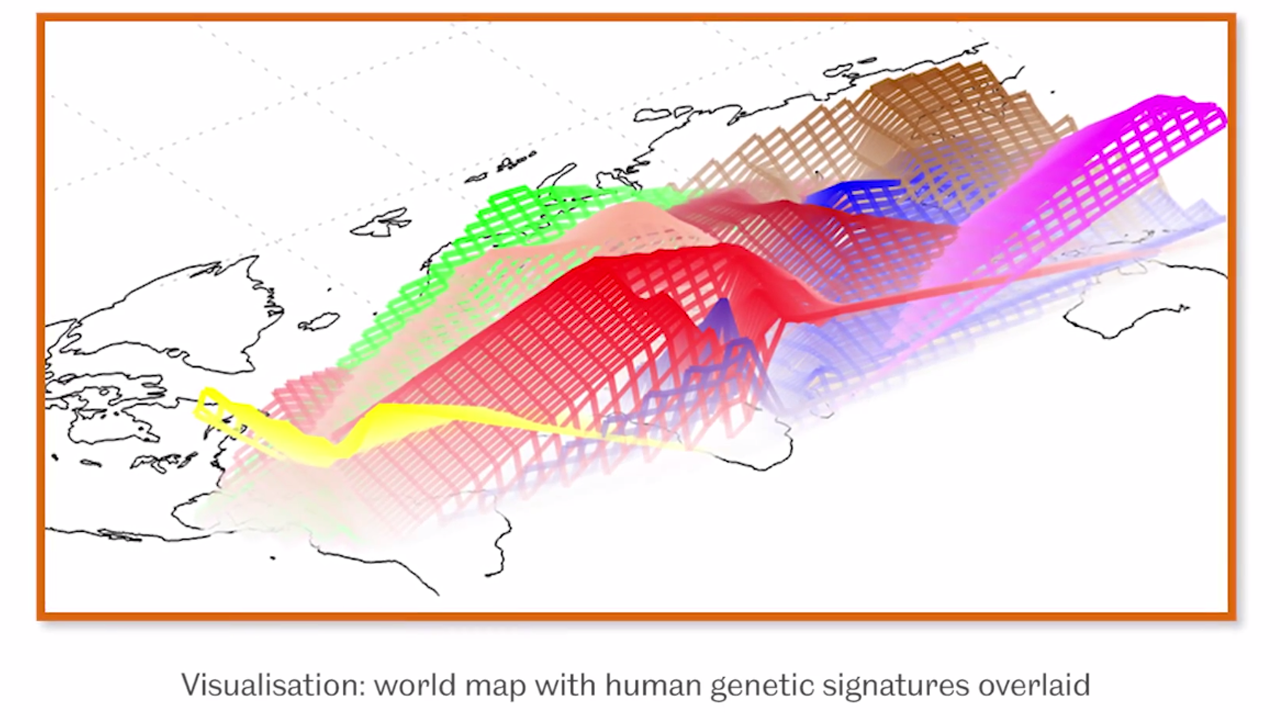An international team of scientists has developed a process that allows them to pinpoint a person’s geographical origin going back 1,000 years. Known as the Geographic Population Structure (GPS) tool, the method is accurate enough to locate the village from which the subject’s ancestors came, and has significant implications for personalized medical treatment.
The new tool was created by Dr. Eran Elhaik from the University of Sheffield and Dr. Tatiana Tararinova from the University of Southern California. Whereas previous methods have only been able to trace the origin of a person’s DNA to within some 700 km (435 miles), the new method can track worldwide populations back to the islands or villages they descend from, with a 98 percent success rate.
GPS focuses on genetic admixture, a historically common occurrence in which previously separate populations begin to interbreed, creating new gene pools in the process. The new tool models this process by looking at more than 100,000 DNA signatures, known as ancestry-informative markers (AIMs) that are typical to specific geographical regions. The GPS tool uses autosomal chromosomes for analysis rather than mitochondrial or Y chromosomal DNA, as they provide a more balanced picture of an individual’s genetic makeup.
"We were surprised by the simplicity and precision of this method," said Dr. Elhaik. "People in a given geographical area are more likely to have similar genetics. When they also have genetic traits typically found in other, distant regions, the geographical origin of those traits is generally the closest location where those traits can be found.”

In the research study, published in Nature Communications, the team was able to place 25 percent of residents of 10 villages in Sardinia to their specific villages and the remainder to with 50 km (31 miles). Additionally, residents of 20 islands in Oceania were tested, with 90 percent being traced back to their exact island.
The breakthrough has significant implications in a number of fields. Being able to more accurately determine a patient’s ancestry will allow doctors to determine their susceptibility to certain genetic diseases, tailoring treatment and diagnostics accordingly. Additionally, there is evidence to suggest that different genotypes may respond differently to certain medical treatments.
The new tool also has implications when it comes to the study of the geographical origin of certain populations, such as the Roma Gypsies or European Jews. In fact, Dr. Elhaik believes that GPS may significantly alter our perception of ethnicity. "It is impossible for any of us to tick one box on a form such as White British or African as we are much [more] complex models with our own unique identities," he said. "The notion of race is simply not plausible."
One of the most interesting aspects of the project is that just about anyone can use the new tool, providing they've already had their autosomal DNA genotyped by an external company (something that costs around US$100-200). Once that’s taken care of, users can upload their DNA data to the website, developed by Dr. Tatarinova, and use GPS to locate their ancestral home.
Watch the video below for more on the new GPS tool.
Source: University of Sheffield





